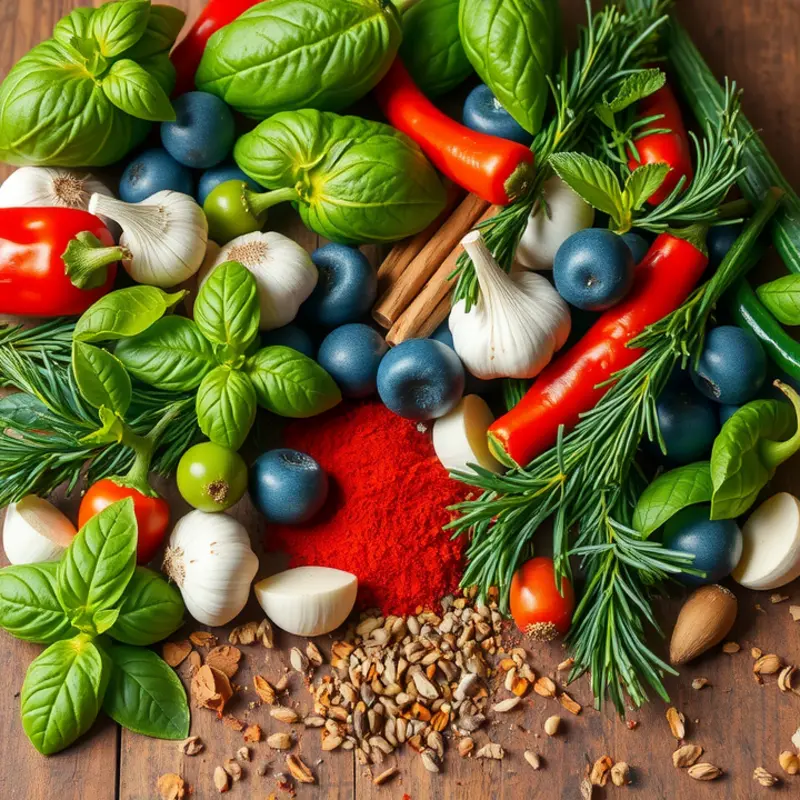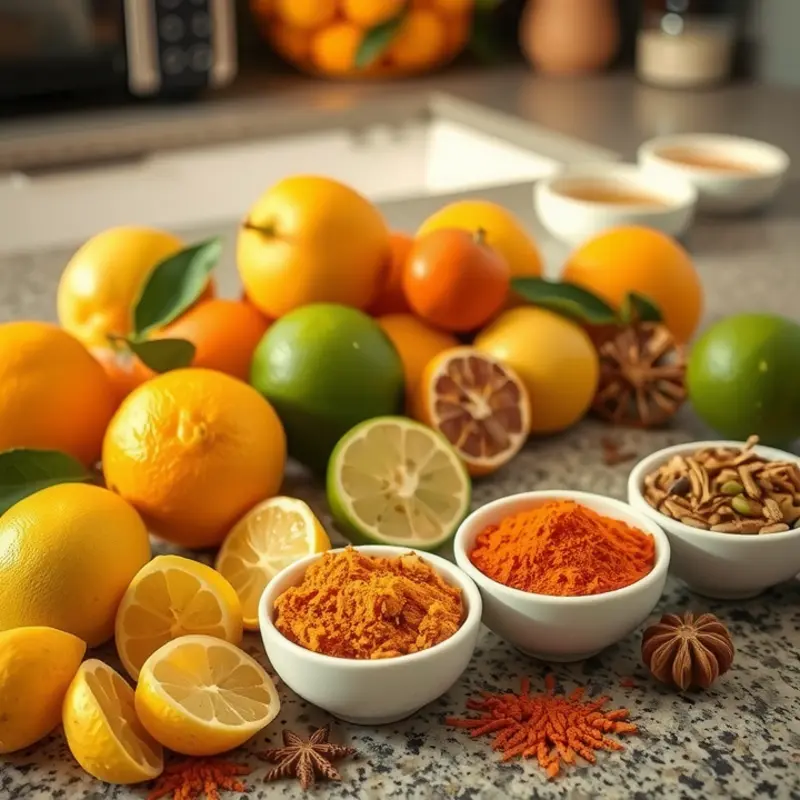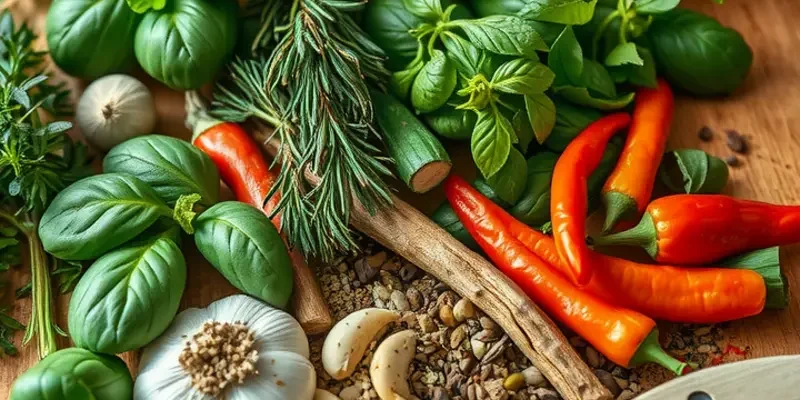Cutting back on sodium doesn’t mean sacrificing flavor. With the right seasonings and creative substitutes, you can enhance your dishes without the added salt. This guide reveals a variety of low-sodium options that home cooks can easily implement, embracing a flavorful yet heart-healthy approach to cooking.
Herbs and Spices: Nature’s Flavor Powerhouses

Herbs and spices are nature’s answer to flavor without needing extra salt. These powerful ingredients are essential for anyone seeking to maintain heart health by reducing sodium intake. Let’s delve into specific herbs and spices that can enhance dishes, providing not only rich flavors but also an array of health benefits.
Herbs to Enhance Flavor
Basil is a versatile herb, ideal for Italian and Mediterranean dishes. It pairs beautifully with tomatoes, garlic, and cheeses. Consider a sprinkle of fresh basil on pasta or pizza. Rosemary offers a robust, woodsy flavor that complements roasted meats and vegetables. Infuse olive oil with rosemary for an aromatic salad dressing.
Thyme adds depth to savory dishes like soups, stews, and roasts. Its earthy yet minty undertone brings balance to heavier meals. Integrate it into marinades or as a final garnish to capture its full essence. Cilantro, perfect for Latin and Asian cuisines, mingles citrusy and peppery notes that brighten up salsas, salads, and tacos. Its seeds, known as coriander, offer a warm, nutty flavor that can enhance curries and bread.
Spices as Flavor Enhancers
Paprika is a spice that varies from sweet to hot, made from ground peppers. It intensifies flavor without overpowering. Use it in rubs for meats or sprinkle it on roasted vegetables for a pop of color and taste. Cumin delivers a warm, aromatic richness essential for Indian and Middle Eastern dishes. It marries well with beans and grains, providing a slightly sweet and bitter profile.
Turmeric, the golden spice, is renowned for its health benefits, particularly its anti-inflammatory properties. It imbues dishes with a vibrant color and subtle mustard-like aroma. Incorporate it in rice dishes or mix it with black pepper and oil for dressings. Ginger imparts a pungent and spicy touch to sauces and soups. For best results, use fresh ginger in stir-fries or teas to invigorate your palate.
Creating Your Own Blends
Crafting your own spice blends can be as satisfying as cooking itself. A simple starting point is an all-purpose blend: mix equal parts of dried basil, oregano, garlic powder, and paprika. This mix enhances Italian and Mediterranean recipes seamlessly.
For a Middle Eastern twist, a Za’atar blend made with thyme, sesame seeds, sumac, and salt-free garlic powder adds intrigue to flatbreads and meats. For heat lovers, create a smoky chipotle mix by combining ground chipotle, cumin, smoked paprika, and onion powder for grilled dishes.
Pairing Herbs and Spices with Cuisines
Italian cuisine benefits from the classics like basil, oregano, and rosemary, which enhance tomato-based sauces and cheeses. For Mexican flavors, coriander, cayenne, and cumin are indispensable in enriching tacos and chili dishes.
Moving to Asia, ginger, garlic, and cilantro elevate the umami notes in stir-fries and soups. When exploring Indian recipes, incorporate turmeric, cumin, and cardamom for intricate layers of flavor.
Remember, the key to using herbs and spices is experimentation and balance. Start with small quantities and taste as you go. For more tips on reducing reliance on salt, consider exploring alternative flavor boosters for inspiration beyond herbs and spices.
With the artful use of herbs and spices, transforming meals into sensory delights without the addition of salt becomes an attainable and enjoyable culinary adventure.
Creative Alternatives: Homemade Blends and Citrus Zests

Citrus zests and homemade seasoning blends can transform meals without the need for excessive sodium. The bright, tangy essence of citrus fruits like oranges, lemons, and limes offers a natural vibrancy that can elevate any dish. Integrating these flavors ensures your meals are not only healthier but also irresistible.
Homemade seasoning blends are a versatile way to pack a punch in your cooking while cutting down on salt. Consider creating a mix with smoked paprika, garlic powder, onion powder, and a dash of cayenne. This spice blend can season everything from roasted vegetables to lean meats, bringing depth without overwhelming the palate.
Citrus zest is another powerful tool in reducing sodium intake. The outer peel of citrus fruits contains oils that are fragrant and flavorful. A touch of lemon zest can lighten up marinades, while orange zest works wonders in salad dressings. Lime zest, with its extra bite, complements Mexican and Asian cuisine beautifully.
For an all-around citrus blend, combine dried rosemary, thyme, basil, and a mix of citrus zests. This blend can enhance dishes like grilled chicken or fish, providing a fresh and herbal aroma. For those looking to explore more extensive uses, the zest can also be dried and stored for future use, maintaining its potency over several months.
To make these blends a part of your everyday cooking, consider incremental swaps. Replace your usual salt seasoning with a citrus-based blend on grilled vegetables or homemade soups. Explore unique combinations such as ginger and lime zest for a zingy chicken rub or a sweeter profile with orange zest and vanilla for baked goods.
Citrus zests and homemade seasoning combinations offer almost limitless possibilities for enhancing flavor. Not only do they allow you to reduce sodium, but they also bring a level of sophistication and excitement to your culinary repertoire. Embrace the natural flavors available in these alternatives and discover the joy of creating meals that are both nutritious and flavorful.
For further exploration of seasoning options without salt, visit our comprehensive guide on flavor boosters without salt.
Final words
Enhancing flavor in your meals while reducing sodium intake is achievable with the right strategies. By experimenting with herbs, spices, and homemade seasoning blends, you can create delicious dishes that cater to your health needs without compromising on taste. The options discussed offer flexibility and creativity, inspiring you to delve into the diverse world of low-sodium cooking. Remember, every small change contributes to a healthier lifestyle, making it worthwhile to explore these flavorful alternatives.







